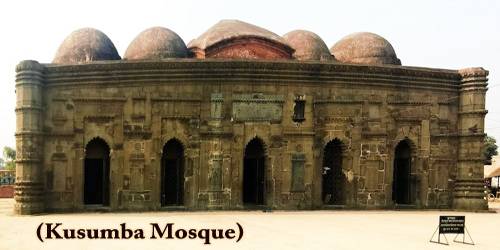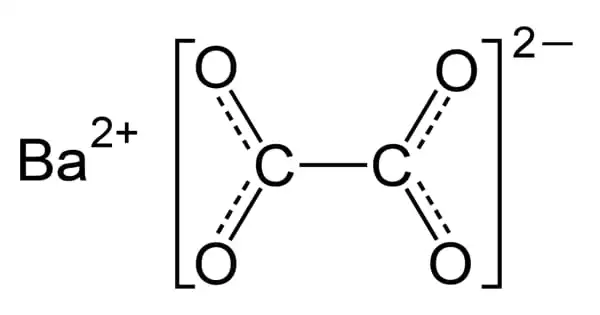Kusumba Mosque (Bengali: কুসুম্বা শাহী মসজিদ) is named after the village of Kusumba, under the Manda Upazila of Naogaon district, Bangladesh, on the west bank of the Atrai River. The mosque was built in 1558-59. This mosque is one of the best-preserved ancient monuments of Bangladesh. According to an inscription it was erected by a patron Sulayman in 1558 during the reign of Ghiyath al-Din Bahadur Shah. It is inside a walled enclosure with a monumental gateway that has standing spaces for guards. Kusumba Mosque is named after the village of ‘Kusumba’. It was built during the period of Afghan rule in Bengal under one of the last Suri rulers Ghiyasuddin Bahadur Shah, by one Sulaiman who was probably a high ranking official. The inscription tablet in Arabic (only the word ‘built by’ is in Persian) dating the building to 966 AH (1558-59 AD) is fixed over its eastern central entrance. Although built during Suri rule, it is not influenced at all by the earlier Suri architecture of North India and is well-grounded in the Bengal style. The brick building, gently curved cornice, and the engaged octagonal corner towers are typical features.
The mosque, presently protected by the Department of Archaeology of Bangladesh, was badly damaged during the earthquake of 1897. Although the main fabric of the building is of brick the entire exterior walls, and the interior up to the arches of the pendentives have stone facing. The columns, platform, floor, and perforated side screens are of stone. The mosque has a rectangular plan with three bays and two aisles, three entrances on the east, and two each on the north and south sides. Kusumba Mosque is also known as ‘Kala Pahar’ (কালা পাহাড়), meaning ‘Black Mountain’, or ‘Kala Rotno’ (কালা রত্ন) which means Black Gem. Possible reason: During the massive earthquake of 1897 the mosque was damaged severely, but stood firmly. Another reason can be for such a name is the black plaster of stones at the outer wall. The central mihrab is projected in the west. The interior west (qibla) wall has two mihrabs on the floor level opposite the central and southeastern entrances, but the one in the northwestern bay is above a raised platform ascended by a staircase on the east. The mihrabs have elaborate stone carving. They have cusped arches crowned with kalasa (water pot) motifs, supported on intricately carved stone pillars, which have projections and tasseled decorations hanging from chains. Bunches of grapes and vines curve in an almost serpentine manner on the mihrab frames, and kalasas, tendrils, and rosettes are reduced to dots. The platform edge has grapevine decoration, and there are rosettes on the spandrels of the arches supporting the platform, as well as on the mihrab wall. The inscription tablet is totally in Arabic, except the part “built by” is in Persian. Walking up to the mosque, visitors will be greeted by a massive gateway, which is the only entrance to the mosque that is protected by a surrounding wall. It has four octagonal corner towers of each corner. In the north-west corner of the prayer hall is a raised stone gallery which is called Badshah-ka-takht or ladies gallery. The roof of the mosque is covered with six domes. The decoration of the mosque entirely consists of stone carvings, confined mainly to the mihrabs and archways like the ‘Chhota Sona Mosque’ in Gaur. The stone used in the exterior facing is of coarse quality and carved in shallow relief. Moldings are the most prominent decorative feature on the outside. They divide the walls into upper and lower sections, run all along the curved cornice, around the corner towers, in a straight line below the cornice, and frame the rectangular panels in the east, south, and north walls. The north and south sides have screened windows.
















